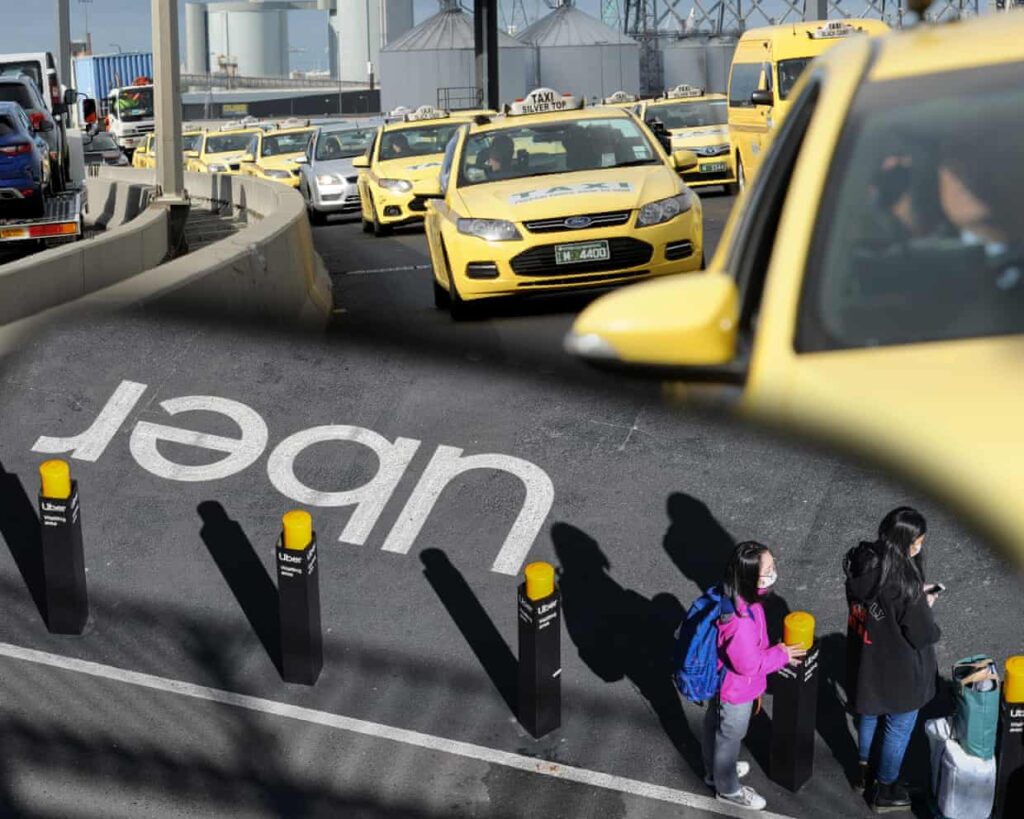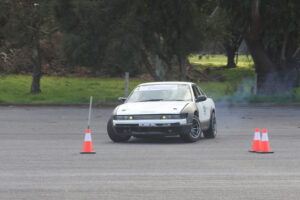
Passengers arriving at Sydney and Melbourne airports will soon notice significant changes in their transportation options, as both cities have initiated trials aimed at improving taxi services and enhancing competition with rideshare giant Uber. Starting March 15, 2024, Sydney Airport will implement a $60 flat fare for trips to the Central Business District (CBD). Meanwhile, a new taxi booking trial at Melbourne Airport has been underway since late last week, allowing passengers to pay a fixed fare upfront.
The changes are designed to deter illegal taxi touts and respond to the increasing dominance of rideshare services in the airport transportation market. The taxi industry supports these initiatives, acknowledging its struggle to compete with Uber and similar platforms.
New Fare Structures in Melbourne and Sydney
At Sydney Airport, the flat fare of $60 applies to all trips from any terminal to the CBD, with larger Maxi-taxis costing $80. This fare structure is part of a twelve-month trial aimed at providing clarity and predictability for passengers. A spokesperson from the New South Wales government stated that while non-compliance remains a concern, on-street inspectors will actively monitor the implementation.
In contrast, the Melbourne trial offers a slightly different approach. Passengers at the Qantas domestic terminal can book a fixed fare through kiosks, entering their destination to receive a quote. After payment, they are issued a receipt and directed to meet a driver from one of four participating taxi companies: Silver Service, Black and White, 13cabs, and Silver Top.
The introduction of these fixed fare systems aligns with similar practices in other major cities like New York and Paris, indicating a shift in how airports are handling ground transportation.
Competition and Market Dynamics
The stakes are high for both taxis and rideshare services, particularly given the millions of passengers who transit through Sydney and Melbourne airports each year. Data from Sydney Airport reveals a significant shift in market share over the past five years. In 2019, taxis accounted for over half of fares from the international terminal, while Uber made up 35%. By 2024, however, Uber had overtaken taxis with 50% of the fares, further increasing to 73% in the first year of the Uber PIN trial.
The Uber PIN trial allows passengers to receive a unique code when booking rides, which is then used to identify their driver at designated pickup zones. This system has contributed to a marked increase in Uber’s share of airport pickups, with around 60% of passengers at Melbourne Airport now opting for rideshare services, compared to 20% who use taxis.
Hussein Dia, a professor of future urban mobility at Swinburne University, views the taxi trials as a necessary experiment but critiques them as largely symbolic in the face of Uber’s user-friendly app interface and complaint management system.
Nick Abrahim, the chief executive of the NSW Taxi Council, expressed support for the flat fare initiative, noting that the council had initially lobbied for a $75 fare. While he welcomed the change, he raised concerns regarding the permanent establishment of the Uber PIN trial, suggesting it unfairly advantages Uber and creates an unbalanced competitive environment.
In response to these concerns, NSW Transport Minister John Graham stated that the trial addresses issues of choice and convenience for rideshare users. Sydney Airport officials echoed this sentiment, highlighting that the introduction of Uber kerbside pickups has improved accessibility for travelers seeking both taxi and rideshare options.
The state government is also taking steps to address issues of overcharging within the taxi industry. Following the prosecution of a taxi driver who charged a fare of $189 for a journey from Sydney Airport to the CBD, fines for first-time offenders will triple to $3,000. Additionally, a new bill in Victoria introduces a “two strikes and out” rule for drivers who repeatedly overcharge passengers.
As the trials progress, the impact on fare pricing is becoming clearer. In Melbourne, fixed-fare offerings from the airport have been tested against Uber fares, revealing a competitive landscape. A recent inquiry found that fares from Melbourne’s Qantas domestic terminal to Southern Cross Station were quoted at $78 in the morning and $79 in the evening for taxis, while equivalent Uber fares were $57 and $65, respectively.
In Sydney, the flat taxi fare of $60 simplifies pricing for travelers. The fare is uniform for any taxi from the airport to the CBD, which may be beneficial during periods of Uber surge pricing—an event the New South Wales government does not regulate.
Abrahim noted that while the flat fare might not always be cheaper, it could be advantageous for trips to northern CBD areas, especially during high-demand periods for rideshare services.
As the transportation landscape evolves in Australia’s major airports, the outcomes of these trials will likely shape the future of both taxis and rideshare services, influencing how millions of travelers reach their destinations in the years to come.






